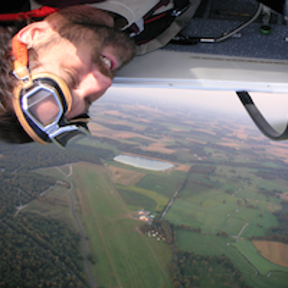Welcome to the Onshape forum! Ask questions and join in the discussions about everything Onshape.
First time visiting? Here are some places to start:- Looking for a certain topic? Check out the categories filter or use Search (upper right).
- Need support? Ask a question to our Community Support category.
- Please submit support tickets for bugs but you can request improvements in the Product Feedback category.
- Be respectful, on topic and if you see a problem, Flag it.
If you would like to contact our Community Manager personally, feel free to send a private message or an email.
Best Of
Re: Best way to make this organic type shape.
In industry, designers usually make organic shapes with curves and surfaces. It's a completely different way to design. Its not easy….
Re: How can I display a grid when I am drawing an sketch?
Once you learn how to use on the fly constraints and hot keys, it's hard to return to the grid system. I tried to think of some use cases where I would use this feature I made, and I can't think of any. Floor layouts perhaps? I use grid's in Unity for snapping pre-built objects to a scene, like walls; but Unity doesn't have a built in constraint system like Onshape. After first learning the grid system then moving to Onshape's constraint system, I'm way more efficient with the constraint approach. But for those who don't want (or don't have time) to learn on the fly constraints, the
Grid feature may prove to be a useful tool.
If there are any improvements users would like to see for the grid feature to make their life easier, please let me know and I'll see what I can do. 😎
.
Re-posting for page 3 viewers in need of grid functionality:
This feature will remember your previous settings. So if it is something you use often, it will be a 1 click set up at the start of your studio.
To add it to your toolbar, just open the link below, and select the (+) button near the top of the screen.
.
Re: How can I display a grid when I am drawing an sketch?
@MichaelPascoe
That looks good. Probably as good as it gets in this scenario. Won't probably use it all the time, but when it comes to those 'building block' designs it might be helpful. Last time, I was helping myself by defining a "#GridDistance" variable at the beginning and then dimensioning all the base points of stuff in the grid in multiples of that (or offset the base mate connectors in the same manner). Thanks for making this. :0)
I'm having Issues with OnShape prematurely crashing with imported 3d scans .STLs and .OBJs
I've been an Onshape user for a few years now (came from Fusion360).
However I've been a little dis-heartened recently with constant browser crashes, and this includes (but not exclusively) when importing NIR 3D scanned models. I've looked through the chats and tried a few things including prioritizing WEBGL rendering with my GPU, clearing Cache, and a few other things but nothing seems to help. Secondary to this I've been working with a friends CNC router, and all their scripts are setup from MAC laptop with Fusion 360, and I was curiously surprised at how well Fusion ran with 5-6 detailed NIR 3d scan clouds in one file - and partly disappointed that I've never had OnShape run anywhere near that well.
Any ideas? I dont really want to go back to Fusion, but what with purchasing a new laser scanner, and the design and CNC'ing I plan to be doing may have to.
Re: How can I display a grid when I am drawing an sketch?
I gave you a vote up…. but I think this will be one of the least used featurescripts :P Good job though:)
Re: How to break bond between parent and child
Sorry to break your heart Ste.😋
By the way, The variables can be changed two ways. Change can be made in the table on mas. When you select which box to view the variables for that part can be changed in the feature tree with out opening the configuration list.
It's not necessary to include variables in the feature tree but it provides nice column header names.
Re: Custom Feature: Gridfinity Bin & Base Generators
Here's an updated version someone made that fixes some of the aforementioned spec issues and adds custom grid sizing
Re: Best way to make this organic type shape.
If you take the curves and surfaces courses in the Learning Center, you'll end up making parts like these.














